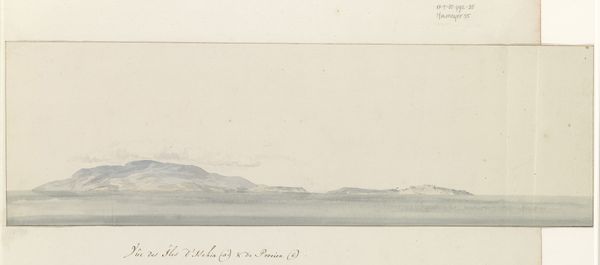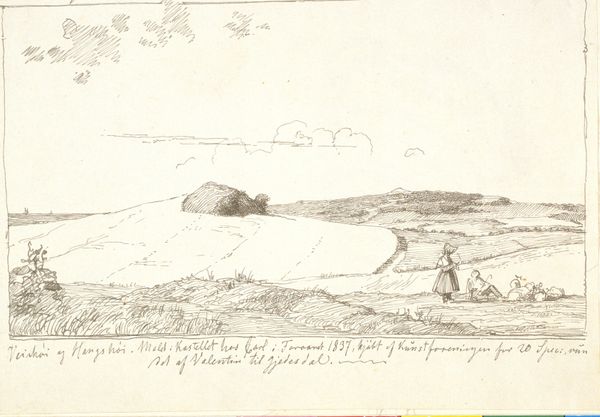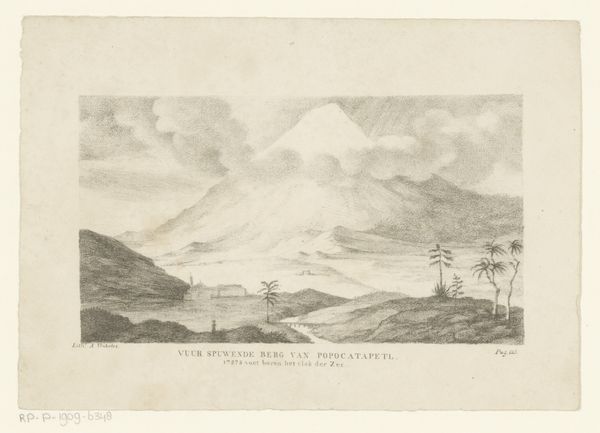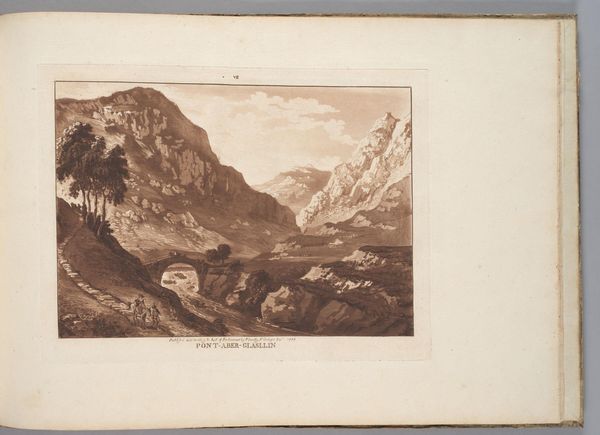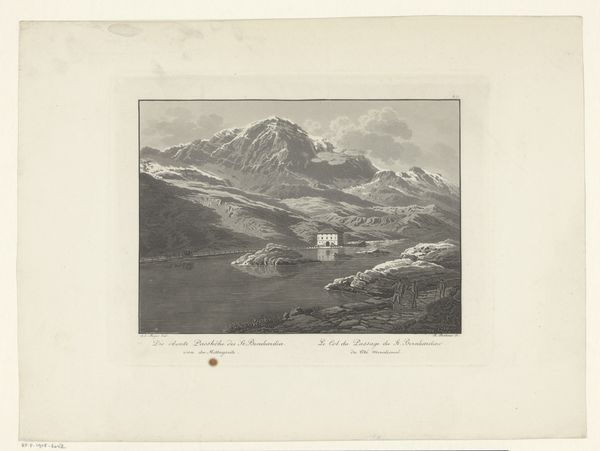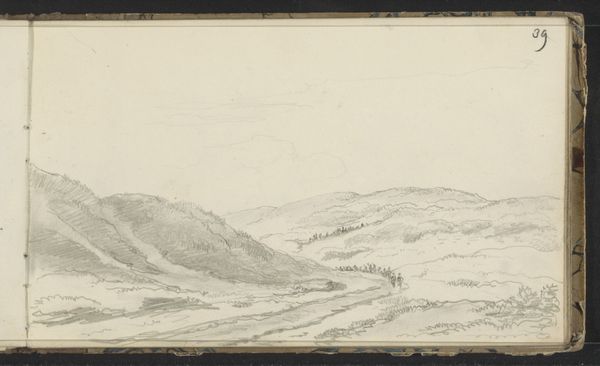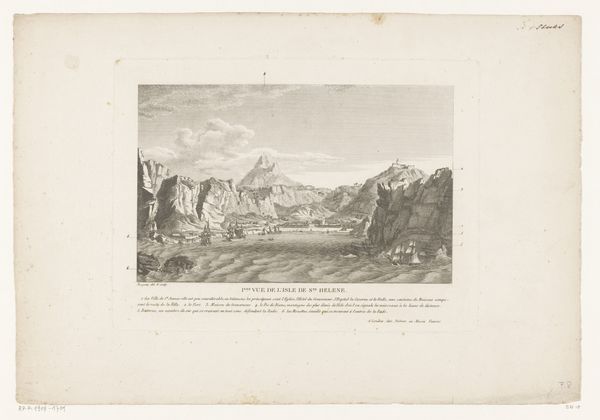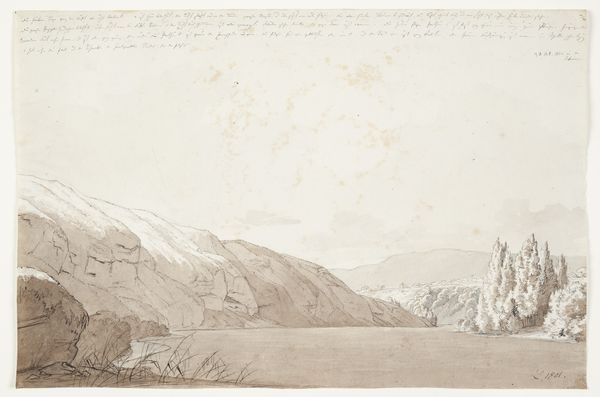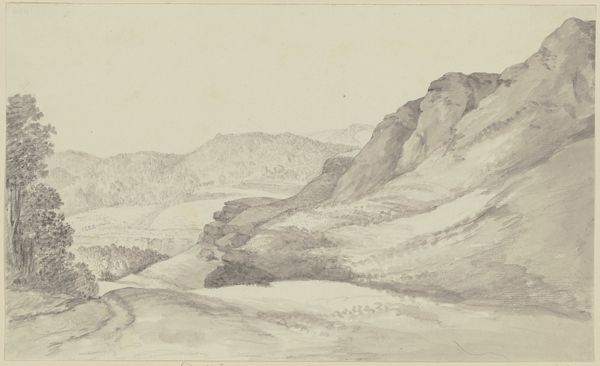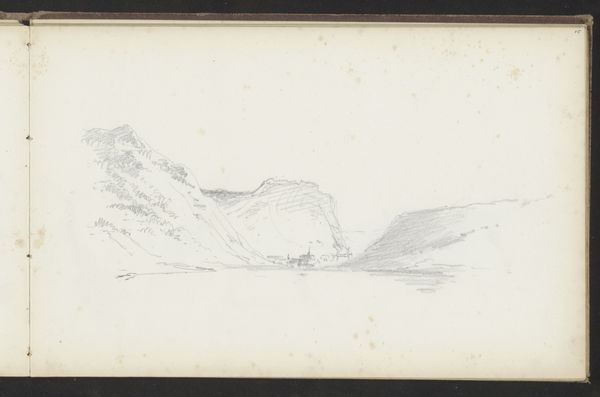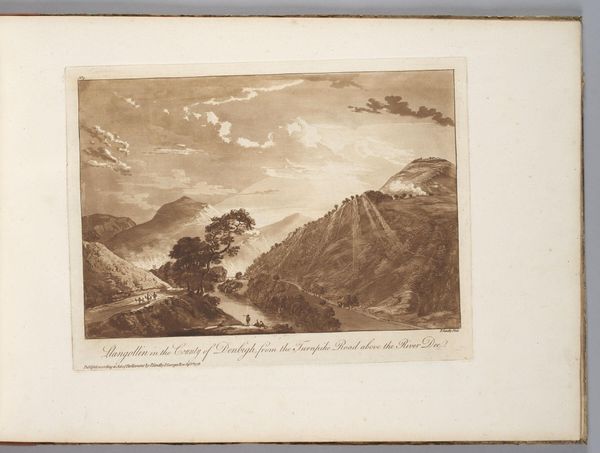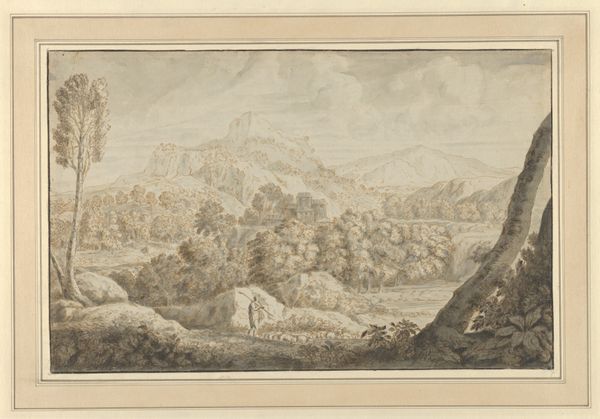
Dimensions: height 145 mm, width 205 mm
Copyright: Rijks Museum: Open Domain
Curator: Here we have Louis Ducros’s "Zig-zag weg die leidt naar de top van Monte Pellegrino," a watercolor and pencil drawing from 1778. It’s currently housed here at the Rijksmuseum. Editor: My first thought is the overwhelming feeling of effort. You really see the laborious process that’s gone into mapping this landscape. Curator: Precisely! Look at the symbolism inherent in the mountain itself, that climb, that pilgrimage to something higher, whether it's spiritual or a literal vantage point. Notice how the winding road acts almost like a maze, hinting at the convoluted path to enlightenment or understanding. Editor: It’s the road’s materiality that gets me. Think about the actual building of that structure in 1778 – the quarrying, the labor, the transport of stone up that very slope… Curator: And how the starkness of the drawing – the use of pale watercolor and precise pencil – almost feels like a map of that arduous process. It reduces the grandeur of nature to a series of calculated marks, yet…it’s still undeniably Romantic. Editor: It makes you consider the contrast. The ethereal destination versus the grounded reality of the materials required to reach it. I bet the social hierarchy played a role in how such massive building undertakings were even conceivable at the time. Curator: Certainly. Perhaps the image serves as a meditation on power structures then: the human desire to dominate and transcend, the social stratifications that enables certain monumental visions, all seen from the artist's vantage point. Editor: So true, this image really makes you think about the cost, literal and figurative, of such ambitions, and who is paying. Curator: Thank you for bringing that perspective. Editor: My pleasure.
Comments
No comments
Be the first to comment and join the conversation on the ultimate creative platform.
